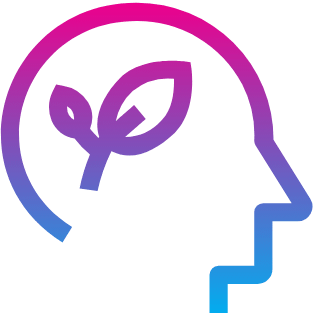Losing weight can often feel like an uphill battle, filled with frustration and disappointment. But fear not, because in this article, you’ll discover a treasure trove of effective weight loss treatments that are sure to get you on the right track towards achieving your health goals. From tried and true methods to cutting-edge innovations, you’ll find a variety of options tailored to your specific needs and preferences. So say goodbye to the endless cycle of diets that leave you feeling deprived, and get ready to embark on a journey towards a healthier and happier you!

1. Diet and Nutrition
Balanced Diet
A balanced diet is crucial for achieving and maintaining weight loss. It involves consuming a variety of foods from all food groups in the right proportions. This means including fruits, vegetables, whole grains, lean proteins, and healthy fats in your daily meals. A balanced diet provides the necessary nutrients and energy to support overall health while promoting weight loss.
Calorie Restriction
Calorie restriction refers to reducing your daily calorie intake in order to create a calorie deficit and promote weight loss. By consuming fewer calories than your body needs, it forces your body to burn stored fat for energy. It is essential to consult with a healthcare professional or a registered dietitian to determine the appropriate calorie restriction for your specific needs and goals, as extreme calorie restriction can be harmful.
Low-Carbohydrate Diet
A low-carbohydrate diet restricts the intake of carbohydrates, such as bread, rice, pasta, and sugary foods. Instead, it emphasizes protein-rich foods like lean meat, fish, eggs, and vegetables. This diet aims to regulate blood sugar levels and promote weight loss by reducing insulin levels. However, it is important to choose healthy sources of fats and limit saturated fats to maintain overall health while following a low-carbohydrate diet.
High-Protein Diet
A high-protein diet emphasizes the intake of protein-rich foods such as lean meats, poultry, fish, beans, and dairy products. Protein is known to increase feelings of fullness, reduce appetite, and boost metabolism. Additionally, a high-protein diet can help preserve muscle mass during weight loss, which is crucial for maintaining a healthy metabolism. It is important to balance protein intake with other essential nutrients and consult with a healthcare professional or a registered dietitian to determine the appropriate amount for your individual needs.
Meal Replacement Programs
Meal replacement programs provide pre-packaged meals or shakes that replace one or more daily meals. These programs can be a convenient and effective way to control portion sizes and calorie intake. Meal replacements are typically fortified with essential nutrients to ensure that your body receives all the necessary vitamins and minerals during weight loss. However, it is important to choose a reputable program and consult with a healthcare professional or a registered dietitian for guidance and supervision.
2. Exercise and Physical Activity
Cardiovascular Exercises
Cardiovascular exercises, also known as aerobic exercises, are activities that increase your heart rate and breathing rate. Examples include jogging, cycling, swimming, dancing, and brisk walking. Regular cardiovascular exercises help burn calories, improve cardiovascular health, and contribute to weight loss. Aim for at least 150 minutes of moderate-intensity aerobic activity or 75 minutes of vigorous-intensity aerobic activity per week, or a combination of both, as part of a balanced weight loss program.
Strength Training
Strength training, also known as resistance training, involves activities that work against external resistance, such as lifting weights, using resistance bands, or performing bodyweight exercises. Strength training helps build muscle mass, increase strength, and boost metabolism. Incorporating strength training into your weight loss regimen can help improve body composition by reducing body fat and preserving lean muscle mass.
High-Intensity Interval Training (HIIT)
High-Intensity Interval Training (HIIT) involves short bursts of intense exercise alternated with periods of recovery. This type of training is efficient and time-saving while providing numerous benefits for weight loss. HIIT workouts boost calorie burn, improve cardiovascular fitness, and increase metabolism both during and after the workout. Consider adding HIIT sessions to your exercise routine for maximum results.
Group Fitness Classes
Group fitness classes offer a fun and motivating environment to engage in physical activity. Classes like Zumba, kickboxing, spinning, or aerobics provide a structured workout led by a qualified instructor. Group fitness classes can help you stay motivated, improve your fitness level, and burn calories. Choose classes that match your interests and fitness level to ensure an enjoyable and effective weight loss experience.
Outdoor Activities
Engaging in outdoor activities can be a refreshing way to incorporate exercise into your weight loss journey. Outdoor activities like hiking, biking, swimming, and gardening provide opportunities to enjoy nature while promoting physical fitness. Not only do outdoor activities burn calories, but they also offer mental and emotional benefits by reducing stress and improving mood. Make outdoor activities a regular part of your weight loss routine to enhance both physical and mental well-being.

3. Behavior Modification
Self-Monitoring
Self-monitoring involves tracking and recording your eating habits, physical activity, and progress towards weight loss goals. Keeping a food diary or using smartphone apps can help you become aware of your daily calorie intake and identify patterns or triggers for overeating. Self-monitoring can also provide accountability and motivation in your weight loss journey.
Setting Realistic Goals
Setting realistic goals is essential for sustainable weight loss. It is important to set attainable and measurable goals to keep yourself motivated. Rather than focusing solely on the number on the scale, consider setting goals related to healthier habits, such as increasing the number of servings of fruits and vegetables or committing to regular exercise. Celebrate small victories along the way and adjust your goals as needed.
Cognitive Behavioral Therapy (CBT)
Cognitive Behavioral Therapy (CBT) is a type of therapy that focuses on identifying and changing patterns of thinking and behavior. CBT can be beneficial for weight loss by addressing emotional eating, developing coping strategies, and improving self-esteem. Seeking professional help from a therapist trained in CBT techniques can provide valuable support and guidance on your weight loss journey.
Emotional Eating Management
Emotional eating refers to the consumption of food as a response to emotions rather than hunger. Managing emotional eating is crucial for successful weight loss. Techniques such as practicing mindfulness, finding alternative stress-relief strategies, and seeking support from therapists or support groups can help you develop healthier coping mechanisms and break the cycle of emotional eating.
Stress Reduction Techniques
Chronic stress can hinder weight loss efforts by triggering emotional eating and disrupting hormonal balance. Incorporating stress reduction techniques into your daily routine, such as meditation, deep breathing exercises, yoga, or engaging in hobbies, can help manage stress levels and promote weight loss. Taking care of your mental and emotional well-being is just as important as focusing on diet and exercise.
Stay tuned for the next part of the article!




